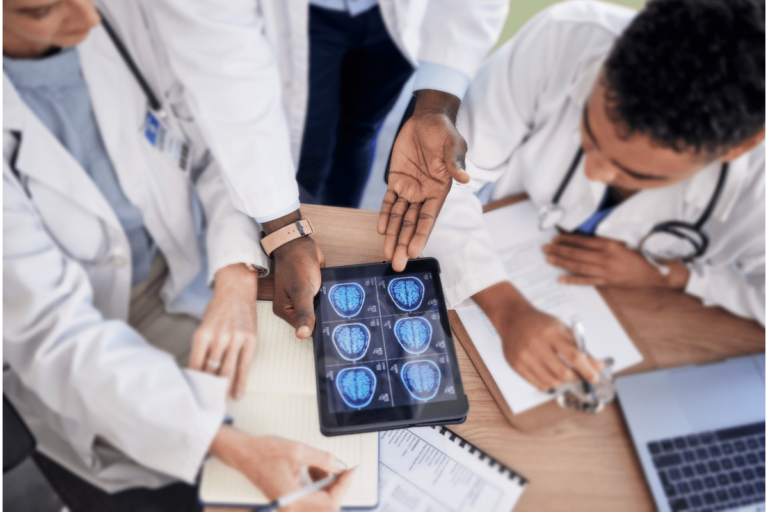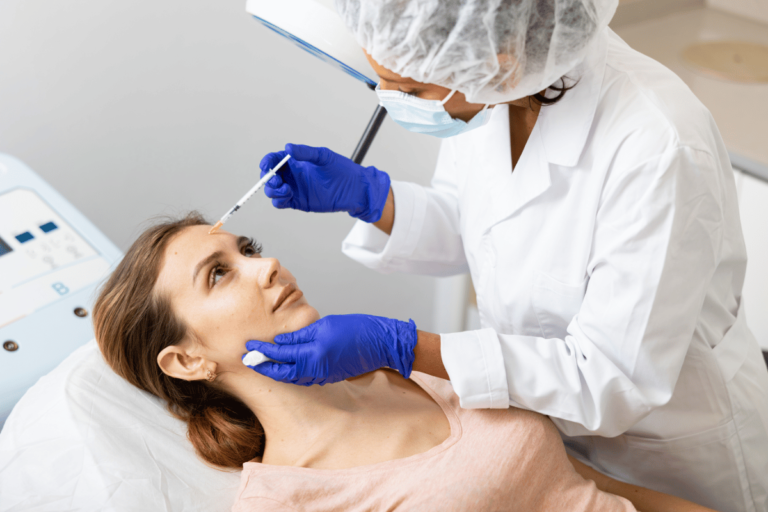Mastering Communication Skills in a Healthcare Setting
Effective communication is the cornerstone of quality healthcare delivery. From patient consultations to interprofessional collaboration, the ability to convey information clearly and empathetically is vital.
In a healthcare setting, mastering communication skills goes beyond simply relaying information; it requires understanding and addressing the unique needs and concerns of each individual.
The impact of effective communication on patient outcomes and satisfaction is well-documented, making it an essential area for healthcare professionals to continually refine and improve.
Key Takeaways
- Effective communication is crucial in healthcare for ensuring patient well-being and satisfaction.
- Active listening techniques and empathy-building strategies are essential for understanding and addressing individual patient needs.
- Overcoming communication barriers, such as language differences and cultural variations, leads to better health outcomes.
- Interprofessional collaboration and team-based patient care are necessary for comprehensive and coordinated healthcare delivery.
Importance of Communication in Healthcare
Effective communication in healthcare is essential for ensuring the well-being and satisfaction of patients, as well as for the successful coordination of care among healthcare professionals. Patient-centered care, which prioritizes the individual needs and preferences of patients, relies heavily on clear and empathetic communication. By actively listening to patients, healthcare providers can better understand their concerns, leading to improved trust and ultimately better health outcomes. Trust-building is a crucial component of effective communication in healthcare, as it fosters a supportive and collaborative environment between patients and providers.
Communication strategies such as using plain language, providing clear explanations, and involving patients in decision-making can significantly enhance the quality of care.
Moreover, effective communication among healthcare professionals is equally vital to ensure seamless coordination and delivery of care. Clear and concise communication among team members, including physicians, nurses, and specialists, is essential for preventing medical errors and improving patient safety. By sharing information, asking for input, and working together cohesively, healthcare professionals can provide comprehensive and integrated care.
Active Listening Techniques
Implementing active listening techniques is essential in healthcare to foster understanding and empathy between healthcare providers and patients. Improving engagement and deepening understanding are crucial aspects of effective healthcare communication. By actively listening to patients, healthcare providers can build trust, facilitate better diagnosis, and improve patient satisfaction.
| Active Listening Techniques | Description | Benefits |
|---|---|---|
| Pay attention | Focus on the speaker and avoid distractions to fully understand the patient's concerns. | Improved understanding and rapport |
| Show empathy | Acknowledge the patient's emotions and validate their feelings to create a supportive environment. | Enhanced patient trust and comfort |
| Reflect on the information | Summarize and repeat key points to ensure mutual understanding and clarify any misconceptions. | Clear communication and accuracy |
| Ask open-ended questions | Encourage patients to share their thoughts and feelings openly, leading to more detailed discussions. | Deeper insights into patient needs |
| Provide nonverbal cues | Use body language and facial expressions to convey attentiveness and support to the patient. | Enhanced connection and rapport |
Building Empathy With Patients
Building empathy with patients is a fundamental aspect of providing high-quality healthcare and fostering a supportive and understanding environment for patients. To develop empathy and enhance patient connection, healthcare professionals can consider the following:
- Active Listening: Actively listening to patients' concerns, fears, and emotions can help healthcare providers understand their perspective and demonstrate empathy.
- Non-verbal Communication: Being mindful of non-verbal cues such as maintaining eye contact, using open body language, and offering a comforting touch can convey understanding and support.
- Cultural Sensitivity: Being aware of and respecting cultural differences can aid in building empathy and creating a more inclusive and supportive healthcare environment.
- Effective Communication: Using clear, jargon-free language and taking the time to explain medical information in a compassionate manner can help patients feel heard and understood.
Overcoming Communication Barriers
To ensure effective care and understanding, healthcare professionals must navigate and address the various communication barriers that can impede the empathetic connection with patients. One of the most prevalent barriers is language differences. Patients who do not speak the primary language of the healthcare facility may struggle to express their symptoms and understand medical instructions. To overcome this barrier, healthcare professionals should enlist the help of professional medical interpreters or translators to ensure clear and accurate communication.
Cultural competence is another crucial aspect of overcoming communication barriers. Healthcare professionals must be aware of and sensitive to cultural differences that can affect communication, such as varying attitudes towards illness, beliefs about medical treatments, and approaches to decision-making. By understanding and respecting these cultural differences, healthcare professionals can build trust and rapport with their patients, ultimately leading to better health outcomes.
Interprofessional Collaboration
Effective patient care relies on the seamless collaboration of healthcare professionals from different disciplines. This necessitates clear role expectations and a commitment to team-based care.
Interprofessional collaboration ensures that patients receive comprehensive and coordinated care, leading to better health outcomes.
Team-Based Patient Care
In delivering optimal patient care, healthcare professionals must engage in seamless and collaborative teamwork across disciplines to ensure comprehensive and effective treatment plans. Team-based patient care, also known as interprofessional collaboration, is essential for providing patient-centered care.
This collaborative approach involves:
- Regular interprofessional meetings to discuss patient cases and treatment plans
- Sharing of expertise and knowledge among healthcare team members
- Coordinating care transitions to ensure continuity and minimize errors
- Implementing a unified approach to address the physical, emotional, and social needs of patients
Clear Role Expectations
Ensuring clear role expectations within the interprofessional healthcare team is paramount for cohesive collaboration and patient-centered care. Establishing boundaries and understanding team dynamics are essential components of this process. Each team member should have a clear understanding of their role, responsibilities, and scope of practice. This clarity helps in avoiding role ambiguity and potential conflicts. It also promotes a more efficient workflow and enhances patient safety.
Open communication regarding individual strengths, expertise, and limitations fosters a supportive and respectful team environment. Regular team meetings and check-ins provide opportunities to discuss and realign role expectations as necessary.
Ultimately, by acknowledging and respecting the expertise of each team member, the entire healthcare team can work together seamlessly to provide the best possible care for their patients.
Enhancing Patient Education
To ensure patients have a comprehensive understanding of their healthcare needs, it is crucial to implement effective strategies for enhancing patient education.
Health literacy plays a pivotal role in patient education, and using clear and simple language is essential to ensure that patients can comprehend the information provided.
Visual aids, such as diagrams, charts, and videos, can significantly enhance patient understanding by providing visual representations of complex medical concepts.
Additionally, interactive educational tools, such as touchscreen devices or online resources, can engage patients in the learning process and facilitate better retention of information.
Utilizing teach-back methods, where patients are encouraged to explain the information they received in their own words, can help healthcare providers assess patient comprehension and address any misunderstandings effectively.
Furthermore, promoting open communication and creating a supportive environment where patients feel comfortable asking questions can contribute to their overall education and empowerment in managing their health.
Conclusion
In conclusion, mastering communication skills in a healthcare setting is essential for providing quality patient care.
It is crucial to actively listen, build empathy, and collaborate effectively with other healthcare professionals.
Overcoming communication barriers and enhancing patient education are also important aspects of effective communication.
By honing these skills, healthcare professionals can ensure that patients receive the best possible care and support.







